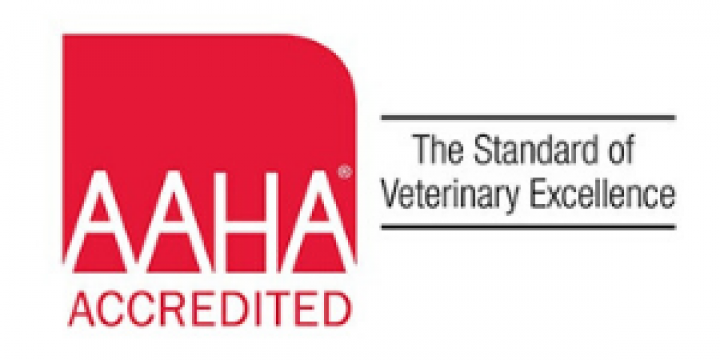This is a great question because teeth cleaning for a pet is a little bit more involved than what we as humans experience.
Since all our dental work is customized for each pet and their specific oral hygiene issues, there really is no “typical pet teeth cleaning.” Still, some general comments can be made and the following description outlines how things typically unfold.
Most pet dentals are day admissions. This means the pets are admitted early in the morning and then free to go home in the late afternoon.
All patients admitted for surgery or dentistry receives an initial physical examination by the veterinarian with careful attention paid to the mouth, teeth, heart and lungs. The veterinarian reviews any pertinent historical facts, and also performs a screening electrocardiogram – also called an ECG or EKG. Any unexpected abnormalities are either resolved or brought to the family’s attention for further investigation or treatment. Pre-anesthetic blood testing is also often performed to help assess the degree of internal damage already wrought by the pet’s dental disease.
Most pets undergoing teeth cleaning at the Chastain Veterinary Medical Group (CVMG) facilities receive an intravenous catheter – or IV – for intravenous fluid therapy during the procedure. This may sound a little over the top, but in fact, intravenous fluid therapy is simple and greatly improves the safety of general anesthesia. It helps maintain normal blood pressure, normal kidney function, and normal electrolyte balance and it prevents post-op dehydration. In addition, if a serious problem were to develop during the procedure, the presence of an IV line permits immediate emergency treatment.
As soon as anesthesia is induced, a breathing tube is gently placed in the pet’s throat to supply oxygen and anesthetic gas. At all CVMG facilities we use only isoflurane and sevoflurane for gas anesthesia. These are the two safest gas anesthetics available. Once anesthesia is underway, fluid therapy is adjusted as needed. Electronic monitoring sensors, including ECG, pulse oximetry (a blood oxygen monitor) and often blood pressure sensors are then fitted to the patient. The pet’s eyes are lubricated with ophthalmic ointment to prevent corneal damage and a warm water recirculating blanket is placed. The patient’s eyes, ears, and face are covered with a towel to prevent contamination. Packing material is temporarily placed in the back of the pet’s mouth to prevent accidental inhalation of contaminated water or dental debris. All patients rest on or are covered by their own clean, dry, sanitized towel.
Anesthetic monitoring, both by electronic equipment and human beings is constant through out the procedure. The veterinarian and veterinary nurse are never more than a few feet from the patient at any time.
Once the pet is anesthetized, comfortable, and squared away, the veterinary nurse acts as the dental hygienist. He or she proceeds to clean the patient’s teeth under the close observation of the veterinarian.
After the teeth are thoroughly cleaned, rinsed, polished, and treated with fluoride, the veterinarian examines every part of the patient’s mouth and makes note of any abnormalities. Dental x-rays of any abnormal areas may also be taken. Only at this point – once the teeth have been cleaned, polished and inspected and any dental radiographs taken and interpreted – can the true extent of the pet’s dental disease be fully appreciated.
The veterinarian next formulates a customized additional treatment plan, if necessary, always taking into account the family’s love, insights and preferences. The veterinarian will then telephone the pet owner with his or her findings and suggestions for any additional treatments which may be warranted. Any suggested additional treatments are explained to the pet owner along with the costs involved. We strive to be informative without putting any pressure on the pet owner. Our job at this point is make sure that the family is aware of all of the problems that we have uncovered, if any. This allows the pet owner to make an informed decision as to what to do next.
If agreed, any needed additional treatments – such as oral antibiotic therapy or surgical extractions can be completed. In most cases, any required additional treatments can be performed at the same time as the basic teeth cleaning.
When all the dental work is done, the patient is recovered under the watchful eye of the veterinarian and the veterinary nurse. Most pets are up and about within just a few minutes.
Bad teeth and infected gums can be very painful. That’s why we place special emphasis on pain relief. This may take the form of medications administered before, during, or after the procedure, as well as special dental nerve blocks as needed.
When it is time for the pet to go home, all home care and follow-up instructions are fully explained to the family and presented in written form as well. In some cases, we may even have before and after pictures of the pet’s dental problems & procedures for you. We will also demonstrate some of the various options for home pet dental care. We try to do this using your own pet when ever possible. The more you can do at home, the less we have to do at the veterinary clinic!
Lastly, experience has shown that most patients leaving after dental will need to return in a few days or few weeks for a follow-up visit. Most dentistry follow-ups are complimentary.

